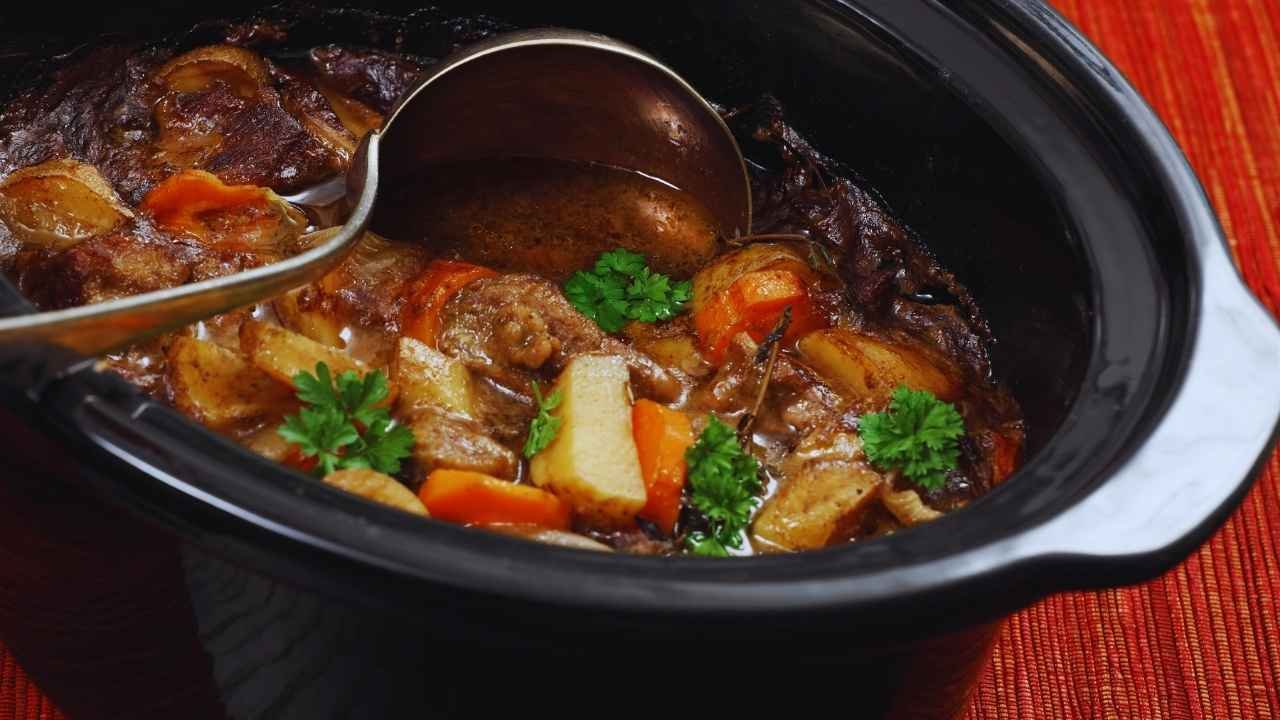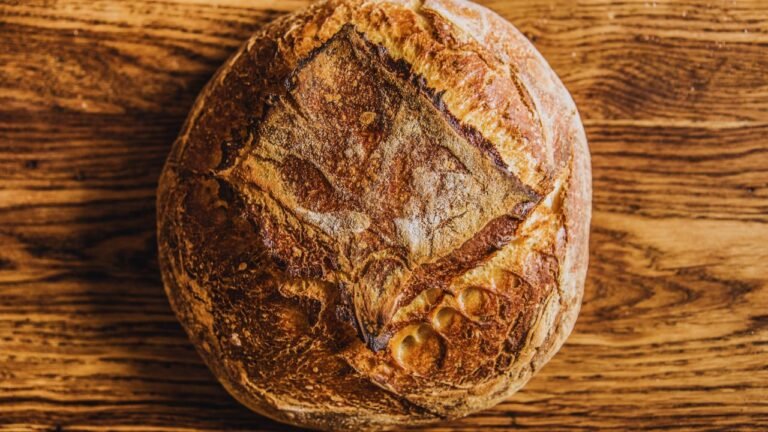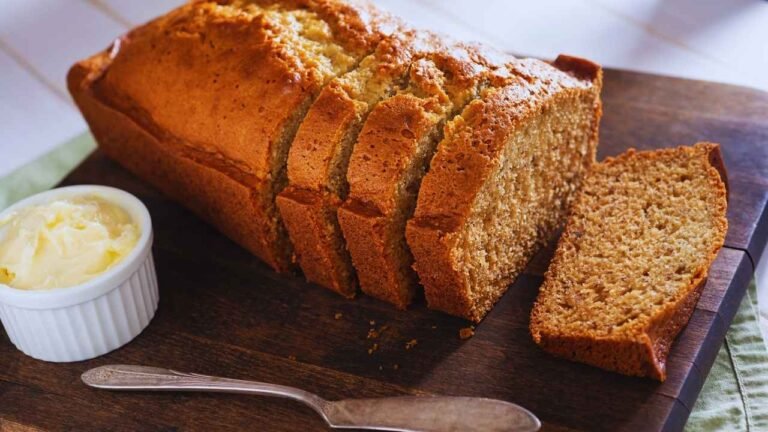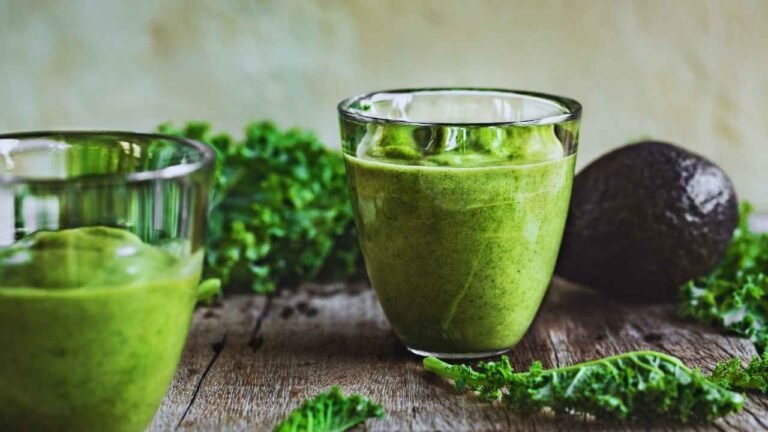How to Make Tender Slow Cooker Korean Beef (Better Than Takeout!)
Who would believe that a slow cooker Korean beef dinner could come together in just 10 minutes of prep time? This is not another at-home dinner in a hurry — it’s a restaurant-type experience that’s surprisingly easy to stage at home.
In fact, this tender Korean beef recipe will turn 3 pounds of chuck roast into melt-in-your-mouth goodness over 7 to 8 hours of slow cooking. The real magic takes place as the meat soaks in the rich flavors of traditional Korean staples such as Gochujang sauce, soy sauce, brown sugar, and sesame oil.
Cooked in a slow cooker, this Korean beef makes enough to feed a crowd — makes 14 to 16 servings — so whether you serve it over rice or wrapped in tacos, everybody wins! Even better, each protein-packed serving (45g per serving) is packed with authentic taste that you’d expect from your favorite takeout place. Want to make this falling-apart tender Korean beef at home? Let’s get started!
Essential Ingredients for Perfect Korean Beef
How to Make the Best Slow Cooker Korean Beef: Good Ingredients Are Key Follow me to see the important ingredients that will make your food original.
Choosing the Right Cut of Meat
Choose Chuck Roast: For the best tenderness and flavor, use chuck roast as your main cut of meat. You’ll need, specifically, about 3 pounds of well-trimmed beef. And, on the flip side, if you’re looking for alternatives, flank steak is effective cut in thin slices against the grain. Rib eye (scotch filet) has great marbling and juicy texture, although it’s a tad pricier.
Korean Sauce Components
The secret to your Korean beef is in the sauce mixture. Your sauce should include:
- Base ingredients: Soy sauce and beef broth for depth
- Aromatics: Fresh minced garlic, grated ginger, and diced onions
- Sweeteners: Dark brown sugar to balance flavors
- Oils and vinegars: Toasted sesame oil and rice wine vinegar
And pour a bit of Asian pear juice or puree into your marinade, as it softens the meat and adds gentle sweetness.
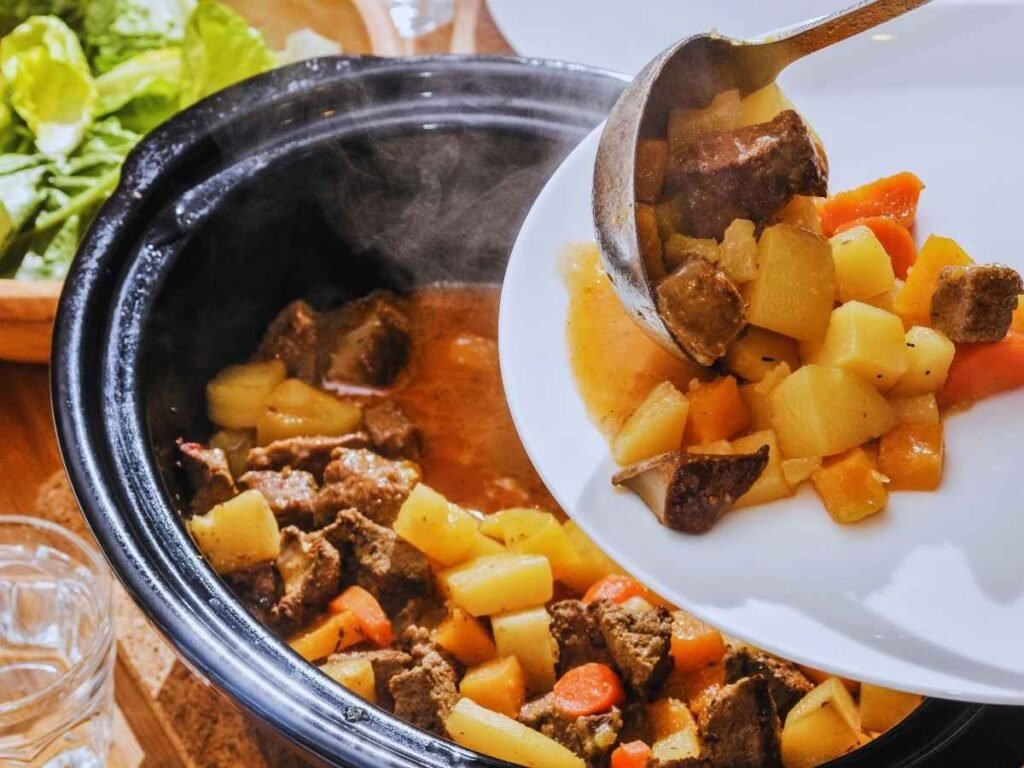
Must-Have Pantry Staples
These essential pantry items will give you authentic Korean flavors. First, make sure you have gochugaru (Korean red pepper flakes), which is a world away from that can of chile powder. Then, have gochujang (Korean chile paste) in your pantry — it’s essential for achieving that ideal marriage of heat and sweet.
The seasoning needs both regular and toasted sesame oil. As a result, the toasted version, called chamgireum, impart an irreplaceable roasted fragrance. Having doenjang (soybean paste) on hand helps round out the depth of your sauce.
Tip: Use low-sodium soy sauce to ensure you are still in control of the saltiness. And don’t forget to have some cornstarch on hand to thicken the sauce to your liking.
Mastering the Meat Preparation
Getting the meat ready right lays the groundwork for super tender, tasty slow cooker Korean beef. Now lets see what techniques you need to transform the good dish to the great one.
Proper Cutting Techniques
For best results, begin with meat that is partially frozen, which makes the slicing much easier. Here’s how to get perfect cuts:
- Wrap your meat in cling wrap
- Freeze for 2 to 2.5 hours until firm but not solid
- Remove and slice against the grain
- Aim for 2-3mm thickness (approximately 1/8 inch)
Meat Tenderizing Methods
The particular method you choose to use to tenderize deeply affects the final texture. Indeed, Korean cooking has a few traditional methods to get to that textbook tenderness:
- Natural tenderizers: Asian pear juice or red apple varieties work effectively
- Fruit alternatives: Kiwi or pineapple (use sparingly as these are stronger tenderizing agents)
- Chemical tenderizing: Baking soda method for budget-friendly cuts
Typically marination times vary depending on your tenderizing agent. Because of that, fruit marinades need a bare minimum of 4 hours, though overnight gets you farther along the flavor spectrum.
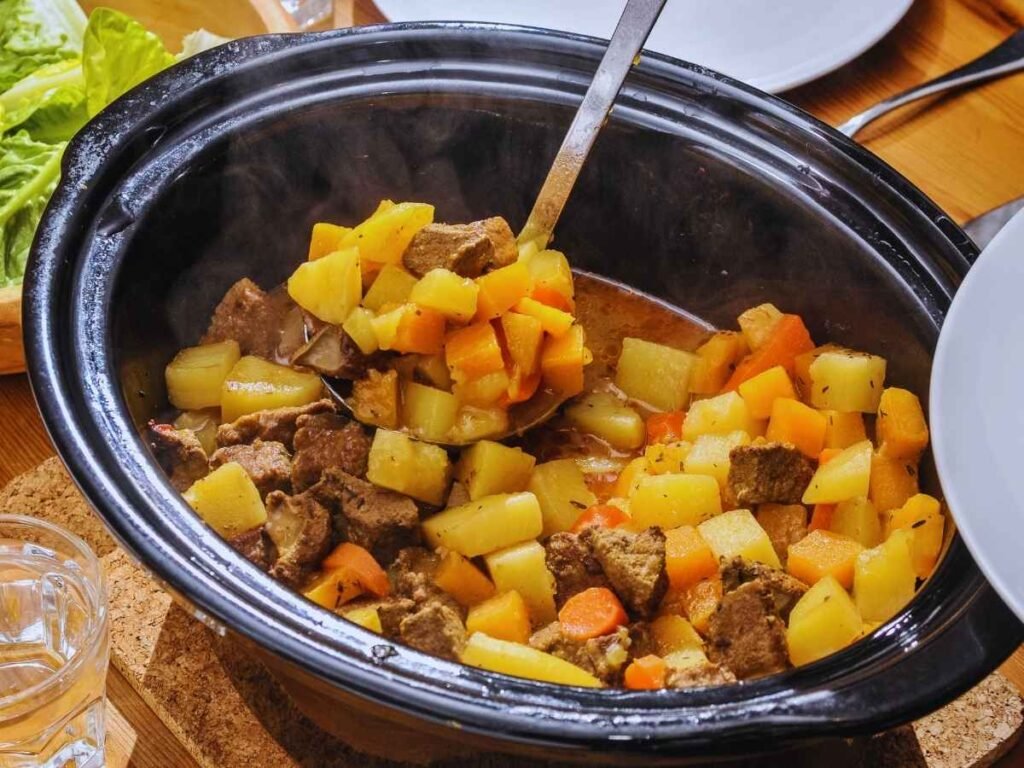
Pre-cooking Seasoning Tips
Before your meat ever touches the inside of the slow cooker, seasoning properly allows the the meat to absorb as much flavor as possible. Begin by dusting your sliced beef with cornstarch. This process provides a protective barrier that can help seal in moisture when cooking for hours on end.
As I said, for a little more traditional Korean flavors, there is no doubt that the mix of soy sauce and brown sugar is definitely your base. That said, you can improve the marinade with:
- Minced garlic and ginger for aromatic depth
- Sesame oil (added separately from other ingredients)
- Gochujang or red pepper powder for heat
Basically, the trick is finding the balance of those flavors, and giving the meat plenty of time to take them up. Don’t forget, while putting on your food prep gloves, to rub the marinade into the meat well!
Slow Cooker Korean Beef Step-by-Step
Here is a step-by-step guide to creating your finished slow cooker Korean beef dish, using the prepared ingredients.
Layering Ingredients Properly
First to note: the layering of ingredients means even cooking and ultimately more flavor absorption. First, add the prepared chuck roast to a 4-5 quart slow cooker. Now, at this point, you have two choices:
Basic Method:
- Add meat directly to slow cooker
- Pour prepared sauce over meat
- Stir gently to coat evenly
Enhanced Method:
- Heat oil in a cast iron pan
- Sear roast on all sides
- Transfer to slow cooker
- Add sauce mixture
Temperature and Timing Guide
One thing to keep in mind, cooking time varies depending on temperature setting. Here’s your timing guide:
- Low Temperature Setting: 7-8 hours for maximum tenderness
- High Temperature Setting: 4-5 hours for quicker results
Compared to other cooking methods, low-and-slow cooking results in more tender food. Basically, you’ll know it’s done when the meat pulls apart easily with two forks.
Sauce Thickening Techniques
Once the cooking time is up, the sauce needs to be thickened to your desired consistency. Here’s the proven method:
Create a cornstarch slurry:
- Mix 1-2 tablespoons cornstarch with ¼ cup cooking liquid
- Whisk until smooth
- Pour mixture back into slow cooker
Final steps:
- Switch setting to high
- Cook additional 30 minutes
- Stir occasionally until desired thickness
For best results, cool the dish for about 15 minutes before serving. At this point, you can skim off excess fat from the surface, leaving only a very thin layer to provide flavor. Finally, stir it all one last time, so the sauce can properly mingle with your juicy beef.
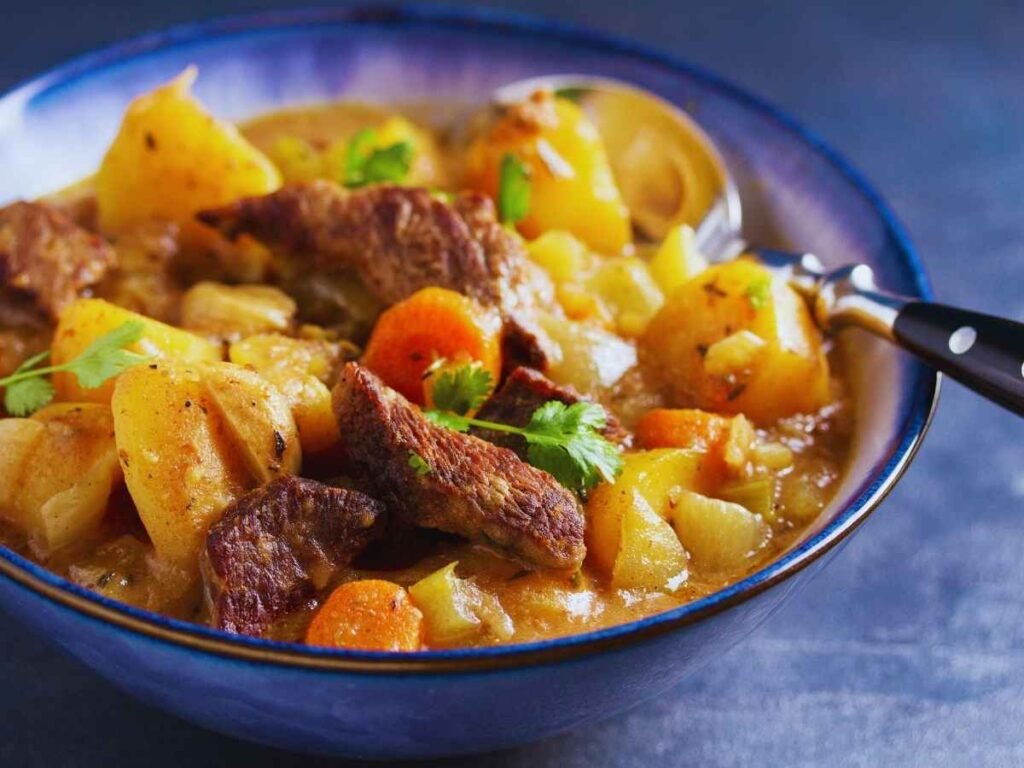
Troubleshooting Common Issues
And even experienced cooks have trouble with slow cooker Korean beef. Here’s how to solve common problems and get perfect results every time.
Fixing Tough Meat Problems
Generally, the root causes of tough meat in your slow cooker Korean beef are insufficient cooking time or the wrong cut. If you sliced into your meat and it still feels tough after the suggested cooking time, try adding on another 1-2 hours. For a tough chuck roast in particular, ensure that there is enough liquid in the pot, and cook some more until the collagen breaks down.
Alternatively, if you’ve already overcooked the meat, you can:
- Keep it warm to prevent further toughening
- Simmer it briefly in beef broth to restore moisture
- Add sauce to enhance tenderness
Adjusting Sauce Consistency
Your slow cooker Korean beef needs to be perfectly sauced. To adjust your sauce:
- For thin sauce: Mix 1-2 tablespoons cornstarch with 1-2 tablespoons water or beef broth
- For thick sauce: Add additional beef broth gradually until reaching desired consistency
- For separated sauce: Remove from heat and whisk gently to recombine
Balancing Flavors
Above all, Korean beef calls for a fine-tuned balance of sweet, savory and spicy components. When your dish needs balancing:
- For excessive saltiness: Add brown sugar or honey to counterbalance
- For bland taste: Incorporate additional gochugaru (Korean red pepper flakes)
- For overwhelming sesame oil flavor: Mix with neutral oils like canola
- For enhanced depth: Add a splash of rice vinegar
Keep in mind that slow cooking concentrates flavors in time. Clearly then, it’s best to season on the low side and then adjust late in the cooking process. This will give flavors time to meld but it should be adjusted about 30 minutes before serving for the best results.
If you’re worried about spice levels, you can dial down the heat even further by cutting down on or leaving out the crushed red pepper flakes. You may want to add other vegetables, like bell peppers or carrots, to the pot during the final hour of cooking to deepen the overall flavor.
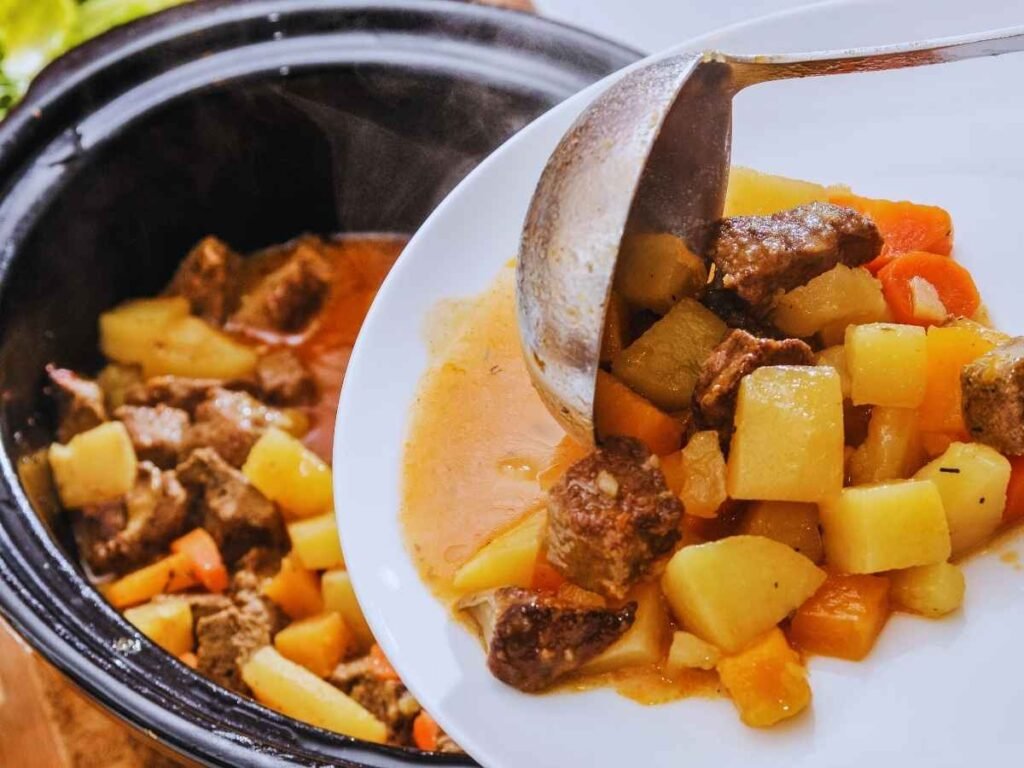
Authentic Korean Finishing Touches
The sauce gives your slow cooker Korean beef veritable dramatic flair, transforming this simple dish into an authentic Korean culinary experience. Here’s how to serve it up in traditional style!
Traditional Garnishes
First and foremost, Korean beef requires certain accompaniments that add presentation and taste. Top the dish with some toasted sesame seeds and minced green onions for authenticity. Also, for some extra texture, flavour and nutrition, you can add:
- Shredded carrots and thinly sliced cucumbers
- Pickled vegetables for acidity and crunch
- Bean sprouts or snow peas for fresh contrast
Sauce Adjustments
Because the sauce is an integral part of your dish’s success, it’s important to be sure to store it properly and make adjustments as needed. Or store any remaining sauce in an airtight container in the refrigerator for up to a week, or freeze it for up to a month.
For sauce modifications:
- Replace regular soy sauce with low-sodium varieties to control saltiness
- Add honey for balanced sweetness without refined sugars
- Incorporate gochujang chili sauce for authentic heat
Serving Temperature Tips
Gosh, as if serving temperature didn’t make such a big difference in both taste and texture. Best Practices for Reheating:
- Use a saucepan over low to medium heat
- Add a small amount of beef broth to prevent drying
- Stir occasionally until heated through
So many bases work with your slow cooker Korean beef, since it’s delicious! For a conventional take, consider serving it over steamed rice. Or, here are some creative ways to serve them:
- Udon noodles for a hearty meal
- Lettuce wraps for a lighter option
- Cauliflower rice for a low-carb alternative
For a fancier dinner, build a Korean-style bowl. Start with your selected base, hot Korean beef on top, then layers of fresh and pickled vegetables. You might also want to top it with a fried egg if you’re so inclined — the runny yolk makes a life-changing sauce when stirred into the mix.
For authentic Korean presentation, serve with traditional accompaniments like kimchi and ssamjang (Korean BBQ dipping sauce). These accompany dishes not only lend authenticity to your meal but also contrast in flavor and texture to go with your slow-cooked beef beautifully.
If you’re planning to store leftovers, remember to keep the vegetables separate until serving. So when reheating, add fresh vegetables after you warm the meat, so the veggies stay crunchy and intact. This method allows each part to keep its intended texture and flavor profile.
Conclusion
Get the Recipe Slow Cooker Korean Beef Perfecting slow cooker Korean beef means Asian fusion restaurant quality right in your own home. Using the right ingredients, correctly prepping the meat, and patiently applying heat, you’ll have tender, delicious beef that competes with any takeout.
Success is all in the details—choosing a quality chuck roast, balancing the components of the traditional Korean sauce and providing proper cooking time. Moreover, the way you pay attention to authentic garnishes and serving make this dish not just a simple meal but a truly authentic Korean restaurant experience.
Whether over steamed rice, wrapped in lettuce leaves or in a modern Korean bowl, your slow cooker Korean beef will no doubt become a family favorite. But ultimately, a lot of it comes down to practice — every time you make this dish, you’ll learn more about how to fine-tune flavors and techniques to suit your own taste.
Try these tried-and-true ways to dress it up, play around with other garnishes and you’ll soon be the master of this versatile Korean beef recipe that works for weeknight dinners and special occasions alike.
How to Make Tender Slow Cooker Korean Beef (Better Than Takeout!)
Course: DinnerCuisine: Korean-American FusionDifficulty: Easy16
servings10
minutes8
hours380
kcalTender, flavorful, and loaded with authentic Korean flavors from gochujang, soy sauce, and sesame oil, this Slow Cooker Korean Beef is hands down going to be a favorite! Just 10 minutes of prep, you’ll have melt-in-your-mouth beef that’s great over rice, noodles, or in lettuce wraps — better than takeout, made right at home!
Ingredients
3 lbs chuck roast, trimmed and thinly sliced against the grain
2 tbsp cornstarch (for coating the beef)
½ cup soy sauce (low sodium preferred)
½ cup beef broth
¼ cup dark brown sugar
1 tbsp rice vinegar
2 tbsp toasted sesame oil
2 tbsp gochujang (Korean red chili paste)
1 tbsp gochugaru (optional, for extra heat)
1 Asian pear or ½ cup pear juice, grated or pureed
4 cloves garlic, minced
1 tbsp fresh ginger, grated
½ small onion, diced
Optional: 1 tbsp doenjang (Korean soybean paste)
Optional: sliced carrots, bell peppers, or snow peas (add during final hour)
Optional: 1 tbsp oil for searing (if desired)
Directions
- Partially freeze beef for 2–2.5 hours, then slice thinly against the grain.
- Toss beef slices with cornstarch to coat.
- In a bowl, mix all sauce ingredients until well combined.
- Optional: Sear beef slices in oil until lightly browned on both sides.
- Place beef in a 4–5 qt slow cooker and pour sauce over it.
- Stir gently to coat the meat evenly.
- Cook on LOW for 7–8 hours or HIGH for 4–5 hours until tender.
- Mix 1–2 tbsp cornstarch with ¼ cup cooking liquid to make a slurry.
- Stir slurry into the slow cooker and cook on HIGH for 30 minutes to thicken.
- Let rest 10–15 minutes, skim fat, and stir sauce before serving.
- Garnish with sesame seeds, green onions, and pickled veggies if desired.
- Serve over rice, noodles, lettuce wraps, or in Korean bowls with fried egg.
Recipe Video
Notes
- For the most tender beef, use chuck roast and cook on low for 7–8 hours. Don’t skip the cornstarch coating — it helps the sauce stick to the beef, and seals in moisture. As with any meat, slice it against the grain for the best texture, and feel free to increase or reduce the gochugaru and gochujang to your taste.
FAQs
How can I ensure my beef is tender when using a slow cooker?
For fork-tender goodness cook your beef on low for 7-8 hours. This causes the collagen in tougher cuts to break down over time, yielding juicy, fall-apart meat.
Does cooking beef for a longer time in a slow cooker make it more tender?
Yes, in general, longer cooking times result in more tender beef. But you do need the right cut of meat — and enough liquid in the pot. Chuck roast and other tough cuts are best with long cooking times.
Why might beef not turn out tender in a slow cooker?
If your beef isn’t tender, you may not have cooked it long enough. Cooking it for too little is what would make the meat marbles become tighter, making the meat more tough. If needed, add an extra hour or two to cooking time, checking to make sure there’s enough liquid in the pot.
What's the ideal cooking time for tender slow cooker beef?
Cook on low for 7-8 hours or on high for 4-5 hours for a tender beef. But cooking times can differ based on the cut and size of the meat. The beef is done when it pulls apart easily with two forks.
Are there any tips for enhancing the flavor of slow cooker Korean beef?
For more flavor, sear the meat before slow-cooking it, for example using a blend of soy sauce, brown sugar and gochujang in the marinade, and adding fresh garlic and ginger. Top it off with the traditional garnishes sesame seeds and green onions to complete the plate.

